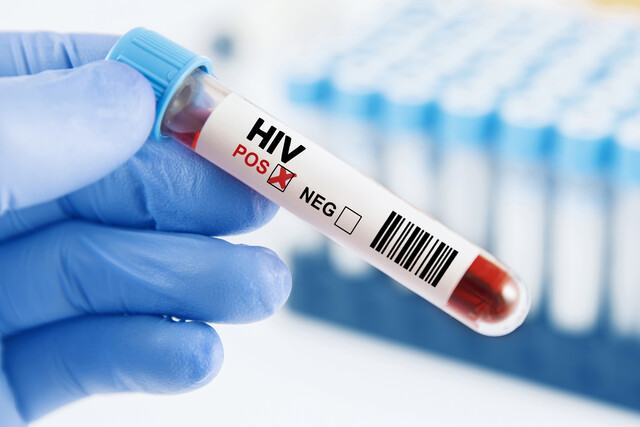How to Prevent HIV Related Illnesses
Introduction
Because HIV damages the immune system, many individuals infected with the virus eventually experience illnesses, conditions, and disease processes that they wouldn't otherwise be susceptible to. Some of the most common HIV-related illnesses include hepatitis C, pneumonia, tuberculosis, and toxoplasmosis.
In this article, we'll discuss some of the most common HIV-related conditions that infected individuals experience, as well as what they can do to help prevent those opportunistic infections, most commonly caused by viruses, fungi, bacteria, and other micro-organisms..
Opportunistic Illnesses and Infections
If you or a loved one has been diagnosed with HIV, it's easy to mistake certain symptoms as side effects of the HIV process. However, some symptoms can be a sign of a developing HIV-related illness. Some of the most common symptoms of opportunistic HIV-related infections and illnesses include but are not limited to:
- Low-grade fever that lasts more than 48 to 72 hours
- Skin rashes
- More frequent and severe bouts of diarrhea
- Difficulty breathing
- Unexplained weight loss
- Visual changes (such as seeing spots)
The most common opportunistic infections related to HIV are summarized by the (Centers for Disease Control and Prevention (CDC). These conditions include:
- Tuberculosis (TB) - an infectious disease that affects the lungs.
- Toxoplasmosis (Toxo) - a flu-like condition caused by parasitic infection.
- Pneumonia (PCP - Pneumocystis carinii pneumonia) - an inflammation of the lungs caused by a viral, fungal, or bacterial infection.
- Human papilloma virus (HPV) - a sexually transmitted infection (STI) that may cause warts in the genital and mouth area, as well as certain types of cancers. In healthy people, an HPV virus generally will clear by itself within a couple of years, but an individual with a compromised immune system may experience recurring bouts of this infection.
- Hepatitis C (Hep C) - a viral infection that inflames the liver, often contracted by sharing dirty drug needles, or through contaminated blood.
- Mycobacterium avium complex (MAC) - a condition that may present during the latter stages of full-blown AIDS. The condition damages multiple organs including the lungs, liver, and spleen. The condition is typically diagnosed in individuals with CD4 counts under 100.
- Cytomegalovirus (CMV) - in healthy individuals, this virus is typically harmless, but with individuals with compromised immune systems, can cause chicken pox and mononucleosis, as well as genital herpes and fever blisters.
- Cryptosporidiosis (Crypto) - a parasitic infection of the small intestines that may cause chronic and watery diarrhea.
-
Not all individuals diagnosed with HIV will ultimately experience such opportunistic infections. Keeping regularly scheduled checkups with your doctor, obtaining prophylactic, or preventive, medication, and a continued understanding and awareness of signs and symptoms may help individuals avoid, or at least reduce, the severity of some opportunistic infections as the virus spreads and further weakens the immune system.
Depending on the age, overall health, diet, and activity levels of certain individuals, conditions related to decreased immune system function will occur at different times for different individuals. One person may experience one complication, while another person experiences something totally different. Some people may experience multiple infections, while another doesn't experience any.
An individual in the advanced stages of HIV, whose immune system is severely compromised, may become severely ill through contraction of a simple cold virus. Some infections may be relatively mild, while others attack different organ systems and spread through the body at an alarming rate. Even though it seems that body systems operate independently, such as the digestive system and the musculoskeletal system, every organ, tissue, and cell in the body is somehow connected to, or reliant on, other body systems for help, function, and support.
-
For this reason, it's extremely important for those diagnosed with HIV to take special care and attention regarding their health and wellness. While it is not always possible to prevent some opportunistic infections, an individual who pays attention to his or her surroundings, observes universal precautions, and is aware of changes in their body may avoid many of these opportunistic infections, or at the minimum, reduce their severity and damage to the body, which is already experiencing a weakened immune system.
One of the most common approaches to preventing and treating opportunistic infections is called Highly Active Antiretroviral Therapy, or HAART. This therapy includes a combination of protease inhibitors and nucleoside analogs, offered in a combinations of three or more anti-HIV drugs and medications. Since the implementation of HAART therapies in the late 1990s, studies have reported an almost 75 percent reduction in HIV-related illnesses. Due to HAART therapies, many individuals diagnosed with HIV, and experiencing AIDS syndromes, are living longer, with more quality and activity in their lives. Today, HAART therapy has helped many individuals avoid the terminal AIDS phase of the condition, instead turning HIV into a chronic, though manageable, condition.
HAART therapies are also known to reduce opportunistic infections, as well as some cancers. These therapies don't work for everyone and individuals on the therapy protocol must stick to a very stringent and specific regimen in regard to medication and dosing schedules.
HAART therapies today typically include at least three active antiretroviral medications, known as ARVs, and two nucleotide reverse transcriptase inhibitors, known as NRTIs, in addition to a non-nucleoside reverse transcriptase inhibitor (NNRTI) or a protease inhibitor known as a PI. That mouthful sounds pretty complicated, which is why many people call it the "drug cocktail."
The intention and function of HAART combinations are to reduce or suppress the replication of viral components in the blood that help slow and prevent the virus from spreading rapidly throughout the body. This therapy enables the body to also have the time to develop and reestablish its own immune system function -- helping to restore damaged or destroyed CD4 cells.
To date, according to the New York University Medical Center, HAART therapies have been shown to slow, or even delay, the progression from HIV to AIDS. Unfortunately, individuals must continue on HAART therapy indefinitely, because when they stop, the HIV virus proliferates and once again takes over.
Doctors have a number of these drugs to choose from when mixing their own "cocktails" for patients. Seven NRTIs, three NNRTIs, and six PIs have been approved by the U.S. Food and Drug Administration to date. The doctor will consider several factors when determining such a "cocktail," depending on the patient's lifestyle and current circumstances, viral load, and their health status.
-
Staying Healthy
In addition to HAART therapies, individuals diagnosed with AIDS can take other, non-medication steps for leading as healthy and active a lifestyle as possible. Proper diet is one of those things. Regular exercise is another. Individuals with a strong support system also seem to better face the challenges, difficulties, and long-term goals when it comes to living with HIV, than those who don't have any support system whatsoever.
Getting plenty of rest is also important to anyone with a compromised immune system. Know your limitations and don't push the body beyond its capabilities. Taking time to rest may be difficult for many formerly active individuals to deal with, but with time, patience, and practice, it is possible and beneficial to overall health and wellness.
Work with a health care provider, or HIV case manager, or a specialist to focus on strategies and changes in lifestyle and habits that may promote comfort and well-being. Regular medical tests and physical exams also will be able to measure the amount of HIV in the body and help prevent infections or potential infections from further compromising health.
Avoid alcohol and drug use, which may not only further compromise otherwise healthy lifestyles, but also may cause further and accelerated damage to the body's organs, as well as reduce the efficiency of drug medications or therapies.
Individuals who have experienced long periods of depression, anxiety, stress, or other issues that prevent complete and thorough engagement in HIV protocols and medication, or therapy drug programs, should attempt to contact a health care provider or arrange for consultation and visits with a psychotherapist, psychologist, or mental health organization or professional. Caregivers and family members may help encourage such visits to help those diagnosed with the condition overcome certain issues, help their loved ones achieve more control over their lives, and be more proactive in treatment and future goals.
Conclusion
No matter what you do, you may eventually contract opportunistic illnesses and infections at some point, but understanding what they are and how they're treated may help you not only protect yourself from them, but also encourage individuals and their caregivers to know and recognize the symptoms of such HIV-related illnesses and seek earlier treatment.
The progression of HIV into AIDS is inevitable, but thanks to medication therapies such as HAART, individuals may slow the progression of the condition for years, if not decades.
What Is My Prognosis?
IntroductionBecause no two people react to the HIV infection in the same way, it's literally impossible for medical providers to determine exactly when, or if, an HIV infection will transform into AIDS. Some individuals experience a gradual, yet inevitable, progression from one stage to another, while others may enjoy years or decades of relatively healthy living before symptoms appear or worsen and the immune system ceases to function properly.
Understanding what happens during the transition from HIV to AIDS will help some individuals be more alert to changes in their body, and to take certain steps to put their lives and finances in order, as well as to make eventual arrangements to receive care.
HIV Prognosis
An HIV prognosis depends on the type, group, and sub-type of HIV with which an individual is diagnosed. For example, there are two different types of HIV: HIV-1 and HIV-2. HIV-2 is not transmitted as easily as HIV-1, but both are similar in that they are transmitted through blood, from mother to a child during birth, or through sexual contact. The HIV-2 virus is more typically concentrated in the West African region and is not typically found in other parts of the world.
HIV-1 is further classified by group and strain. For example, major groups of HIV-1 include Group M, Group N, Group O, and Group P. Group M is further defined in strains given alphabet letters A through H, J, K, and what are known as CRFs, or circulating recombinant forms.
Some strains of HIV may develop into AIDS sooner than others, but a variety of other factors are also involved. The importance of early diagnosis and drug treatment to slow progression and replication of the virus, once determined and diagnosed, is important for any individual diagnosed with any strain or sub-type of HIV.
HIV into AIDS
Over a period of time, the gradual destruction and damage to the immune system and the central nervous system may have a severe impact on a person's ability to fight off infection or other disease processes.One of the key areas that researchers and doctors look at is the CD4 count. When a person's CD4 count approaches 200 or lower, that person is diagnosed with AIDS.
The time it takes HIV to develop into AIDS differs for every individual, impacted by not only age and lifestyle, but also medical treatments, drug therapies, and other approaches that serve to slow down the progression and reduce replication of the virus in the body.
Recall that HIV is defined in stages:
- Primary HIV infection
- Clinically asymptomatic stage
- Symptomatic HIV infection
- Progression from HIV to AIDS
When an individual progresses from HIV to AIDS, multiple body systems may be affected by infections or cancer. For example, the skin may show signs of infection from conditions ranging from Kaposi's sarcoma, to Varicella zoster. The central or peripheral nervous system may be affected by non-Hodgkin's lymphoma, herpes simplex, toxoplasmosis or cytomegalovirus.
An individual may also experience increased gastrointestinal disturbances, or conditions including Candida, cryptosporidiosis and Kaposi's sarcoma. One of the most common systems in the body that shows signs of a transition from HIV to AIDS is increasing respiratory system difficulties and infections, which may include tuberculosis and pneumonia.
At this stage, an individual may also experience a gradual loss of weight, called the HIV-wasting syndrome. Recurrent bacterial infections, pneumonia and other HIV-related conditions and illnesses gradually cause an overall decline in the strength and physical capabilities of the individual. In some cases, infections affect the neurological system, including brain functions, which may limit ability to move, feed oneself, and damage cognitive abilities.
Slowing Down Progression
Treating HIV has promoted the development of multiple drug therapies considered extremely effective for many. While treatment for HIV has undergone extreme and beneficial results, the complications that arise from a damaged immune system are often the ones that provide the greatest danger to those diagnosed with the condition.
Individuals may experience a variety of infections with unique parameters or characteristics. Two people diagnosed with HIV may react to a simple and common cold very differently. The HIV virus is a progressive condition that is always under new development and growth. How effectively that growth is reduced or slowed depends on the individual, drug regimens, and lifestyle. Because of this, individuals who become sick don't typically experience illness due to the actual virus, but a variety of opportunistic infections that take advantage of a weakened immune system.
The HIV virus replicates extremely rapidly unless drug treatments and therapies are utilized to slow its progress. Continual progress has been made in controlling HIV, and infection and transmission of the disease has slowed somewhat in the United States. Drug treatments and therapies are under continual development, each one better than the last.
According to the Johns Hopkins AIDS Clinic, preventive treatment in those diagnosed with HIV has reduced the number of HIV related pneumonia from roughly 76 percent in the 1980s to 27 percent in the early 1990s. (Bartless, G. M.D., Finkbeiner, A.: "The Guide to Living with HIV Infection," Johns Hopkins University Press, 1996). Advancements continue.
-
The National Institutes of Health continue to fund research and development in HIV protocols, drug development, and clinical trials. Because of the focus on understanding HIV and AIDS, the condition is one of the most researched medical conditions today. HIV therapies and treatments are advancing rapidly, often in six-month cycles. Treatment for HIV today is extremely and vastly different from treatments offered even a few years ago.
Slowing the progression of the disease process requires HIV treatment plans with anti-retroviral drugs and medication treatment plans. We've already discussed the most common antiretroviral drugs used today, and clinical trials continually produce new drugs and medications, striving for greater efficacy and reduction of symptoms, slowing the progression of the HIV phases, and providing greater comfort to patients.
Additional treatment and care is available through nutrition counseling and complementary and alternative forms of medicine. Another form of treatment designed to help slow the progression of HIV into AIDS is called post-exposure prophylaxis, also known as PEP.
This specially designed treatment program utilizes antiretroviral treatments that begin as soon as someone believes they have been exposed to the HIV virus. The focus of such prophylactic treatments is to help the body protect itself against HIV, and prevent the virus from taking up residence in their body. For the greatest efficacy, such medications need to be taken within 72 hours of suspected exposure.
One of the most common post-exposure prophylactic drugs today is called stavudine, or Zerit, and is taken in a combination of two or three antiretroviral drugs over the period of a month. Unfortunately, the combination of antiretroviral medications may cause severe side effects, such as nausea and vomiting, diarrhea, headaches, and chronic fatigue. According to avert.org, one in every five people on this therapy quit the treatment program before it's completed (http://www.avert.org/pep-prep-hiv.htm). Additional post-exposure prophylactic drugs include zidovudine, lamivudine and nelfinavir.
Studies are under way to determine the efficacy of post-exposure prophylactics in preventing the HIV virus from taking up residence, following the theory that it takes the HIV virus roughly 72 hours to reach the lymph nodes, and an additional 48 hours to reach blood cells. Hopes are that this post-exposure prophylactic treatment will effectively "knock out" the HIV infection before it reaches vital areas of the body whose function is to spread blood and lymph to all other body systems.
Studies are currently under way in regard to this type of therapy, but long-term studies have not determined definitive results. Clinical trials around the world expect completion in the next few years. Until then, individuals diagnosed with HIV must play a "waiting game."
-
Preparing For the Future
At some point in time, caregivers of an individual experiencing severe symptoms of AIDS may need to decide on home-based care, or other forms of palliative care available in hospice or long-term care scenarios. The ability to care for an individual experiencing the latter stages of AIDS is physically and emotionally draining for caregivers.
Palliative care is defined as care that offers comfort to the terminally ill patient and does not attempt to cure or treat the disease process. Palliative care focuses attention on prevention of further infections, pain medications and treatment plans, and an opportunity to benefit from emotional, psychological, and spiritual support.
Hospice care is available in medical facilities, as well as services that offer what is called "hospice at home." Today, the term hospice not only defines the type of care provided, but is a general term that defines end-of-life care in a variety of scenarios, all providing caring, compassionate, and educated staff experienced with AIDS care.
Conclusion
HIV will affect different individuals in different ways. Take the time to learn more about the specifics of AIDS prognosis and future studies by medical researchers and clinical trials to develop medications and therapies to slow down the progression of HIV infections into full-blown AIDS.































